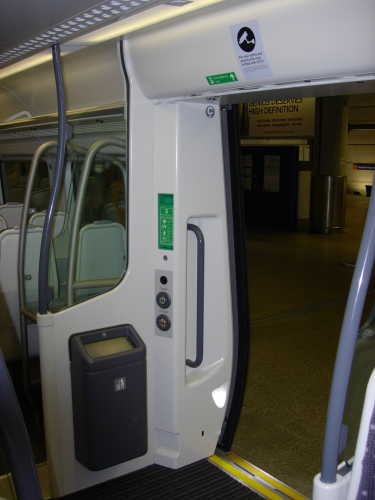
Composites are used in interior items as various as side panels and trim, seats, tables, window surrounds, baggage racks and bins, bulkheads, standbacks, floors and ceilings, vestibules, toilet compartments and staircases. Cumulatively, they can save considerable weight, yielding worthwhile performance and economy benefits.
Dr Joe Carruthers, until recently head of the rail vehicles group of Newcastle University’s NewRail research centre, has estimated that a 10% saving in the mass of a metropolitan rail vehicle can reduce energy consumption by 7%, saving up to $100 000 annually per vehicle.
In presenting a recent case study, Carruthers indicated that substituting composites for metal in items as commonplace as grab rails can make a difference. Steel grab rails typically add more than half a tonne to the mass of a metro vehicle.
A carbon fibre grab rail prototyped by Exel Composites, UK, to NewRail specifications proved 57% lighter than the standard stainless steel version while also being cheaper thanks to use of the pullwinding technique to produce it. (Pultruded items should be similarly affordable when produced in volume.)
Carruthers holds that composites could find greater acceptance if designers were to be less prescriptive in specifying interiors. It would, he suggests, be better to specify performance metrics rather than saying something like ‘the grab rail shall be made from satin-polished stainless steel or aluminium."
He adds that introduction of new material technologies should be carefully managed, perhaps through limited pilot programmes, and that realistic lifecycle assessments would often support the case for such materials.
This article is an excerpt from the feature Can trains be half plastic? published in the July/August 2012 issue of Reinforced Plastics magazine.





